“Surfcasting” for Trout
Under the right conditions, freshwater anglers can enjoy "surfcasting" for trout in ponds with abundant baitfish during the winter months.
Through a salt-stained windshield, I was able to make out whitecaps on the kettle pond that would be my lunch time fishing spot. I had forgotten to check the wind speed and direction, a pre-trout-fishing task that is usually ritual due to the requirement of light tackle for line-shy salmonids. On this day, the water—which is typically glass calm and crystal clear—was turbid and cloudy on account of the heavy wind and chop. These aren’t exactly trout fishing conditions, and despite my gut instinct to turn around and eat lunch for once, a bright sun overhead coaxed me into making a few reluctant casts. To my surprise, the bite was explosive, and I spent the remainder of my lunch break targeting trout in conditions most often associated with surfcasting.
(Note: On The Water is reader-supported. When you buy through links on our site, we may earn an affiliate commission.)
The Trout
On Cape Cod, quality trout stocking programs and deep, cold-water pockets in our kettle ponds lead to consistently quality trout fishing; even for holdover rainbow and brown trout during the warmer months, fishing is good. While brown trout are stocked in select waters each spring, rainbows are stocked twice a year, during fall and spring, in most ponds deeper than 30 feet.
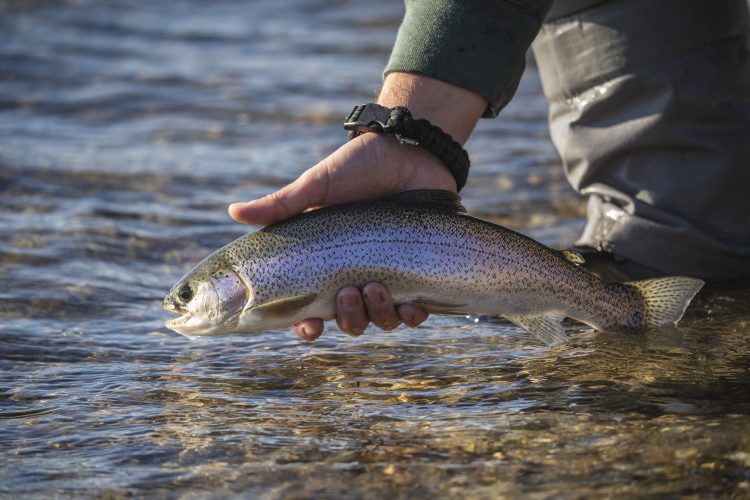
Some of these stocked ponds are land-locked, but several feature herring runs that connect them to saltwater. Those select ponds receive spring migrations from anadromous river herring, which, like striped bass and salmon, leave the oceans to spawn in freshwater. In turn, the herring’s offspring provide fatty, protein-rich forage to bass, pickerel, panfish and trout.
The Conditions
The trout fishing that Thursday afternoon was a spectacle. Sustained high winds had pushed schools of juvenile herring into a cove where they can typically evade predators via herring run access; their objective is to reach saltwater through an arduous journey back downstream. However, on this day, the wind washed excessive amounts of debris across the lake. Dead leaves were piled into a natural dam at the herring run entrance, blocking the escape route of the schooled baitfish, and dooming them in the process.

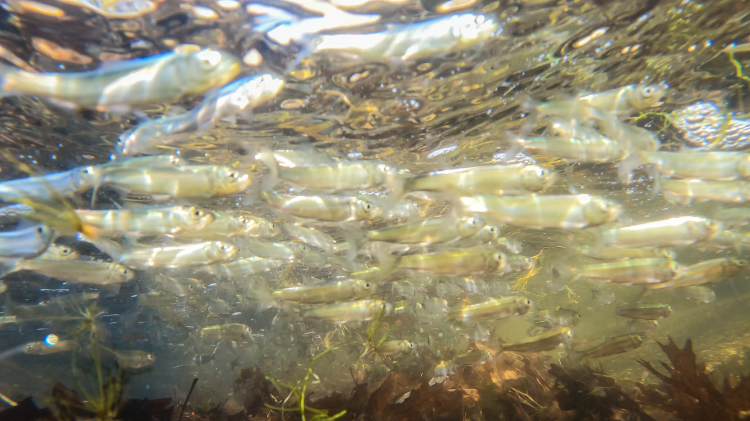
The rainbow trout, survivors of the spring and fall stockings, were keen to this feeding opportunity and cornered the juvenile herring. Aerial displays and blitz-like feeds upon fleeing baitfish felt familiar to surf scenes from bluefish and peanut bunker months earlier. I had never seen trout feeding so voraciously on baitfish, and I couldn’t keep it to myself. I snapped a few photos to capture evidence of these particularly fat rainbows, and returned to the office to share the tale with my coworkers.
The Plan
When the wind kicked up on Friday afternoon, the conditions looked almost identical to the “blitz” the day prior. Joined by OTW’s Adam Eldridge, Jimmy Fee and Mike Carlson, we headed out with cameras, Go Pros and our best herring imitations at the ready, to try and capitalize on these favorable conditions once again.
-
Related Article: 5 Lures for Winter Trout Fishing
It became apparent very quickly that the trout were still holding in this corner, and still dialed on juvenile herring. With the wind in our face, the bait was pushed in shallow, struggling to remain in schools due to the turbulence of the waves which left them vulnerable to hungry rainbow trout.
The Setups
Confident in the size and color scheme of the forage, we opted for a few different rigs that would accurately mimic the juvenile herring.
Jimmy Fee came armed with his float-and-fly rig; the bobber setup consisted of a Thill Pro Series Slip Bobber on a long, Seaguar blue label fluorocarbon leader, adorned with a custom-tied, blue and pink hair jig from OTW Editor in Chief, Kevin Blinkoff.
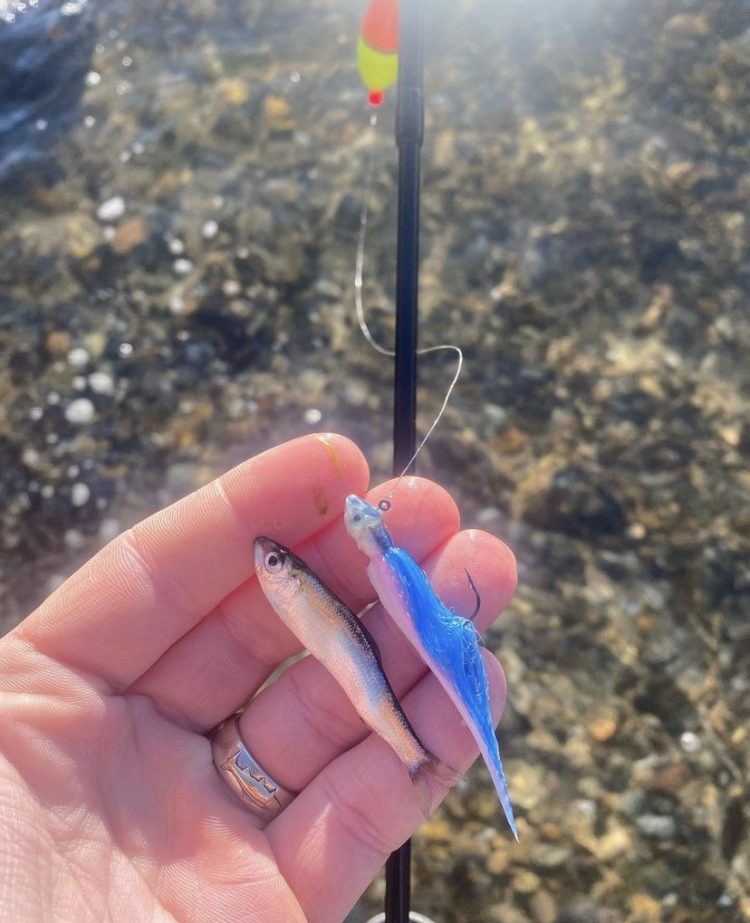
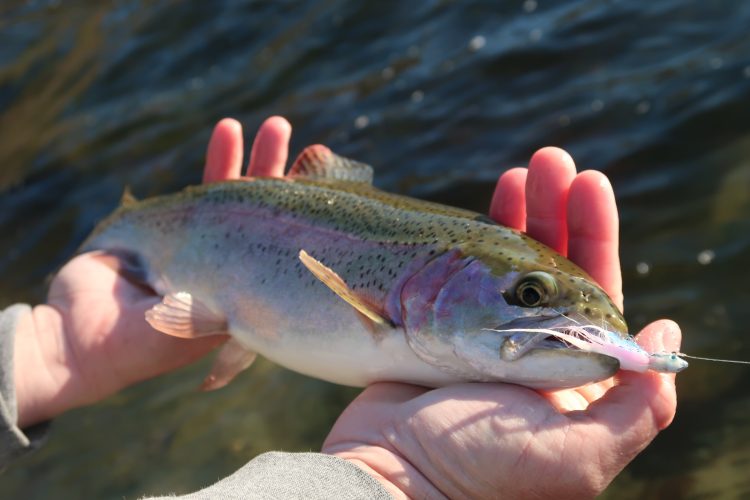
I decided a trusty, silver, ¼-ounce Kastmaster tied direct to 6-pound Berkley Trilene Fluorocarbon would do the trick. It cast like a bullet into the wind so I could cover plenty of space, and it caught just enough sunlight in the muddied water to draw a strike from any nearby trout.
Adam Eldridge threw a wide-bodied, blue and silver Little Cleo spoon to imitate the colors of herring while providing a fatter profile for any trout with overzealous appetites.

But the most important goal of the day was to help Mike catch his first trout, which came in short order after his second cast from the beach. Using my Pfleuger President , Mike cast a 1/8-ounce pink and blue Kastmaster tied direct to 2-pound Berkley Vanish Fluorocarbon Line and hooked a beauty of a rainbow trout. With goal number one accomplished in no time, the only remaining task was to enjoy an unseasonably warm late-December day catching trout.
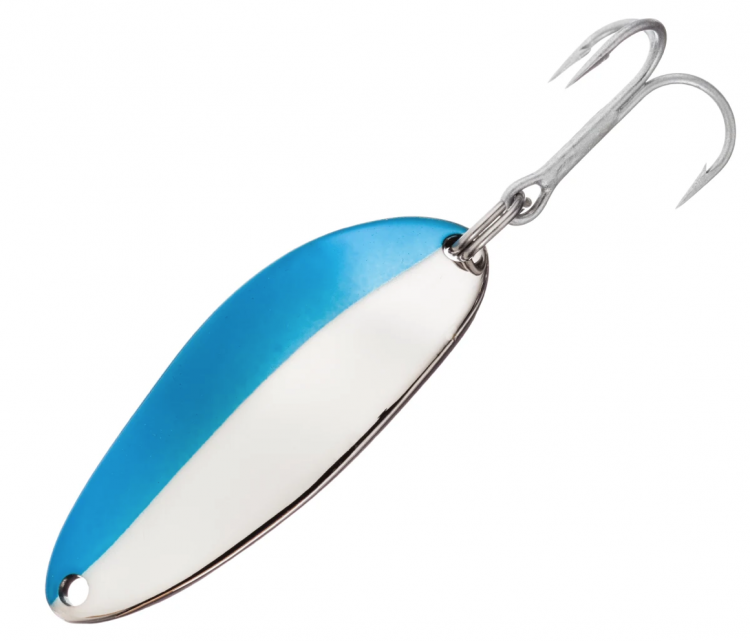
Techniques
Adam, Jimmy and I began picking them one after another for the next forty minutes. A solid lunchtime trout outing usually consists of 2 to 3 fish at most, but this was excessive. In total, we caught over 20 trout in a matter of 45 minutes. The bouncing of the hair jig, the flash of the Kastmaster and the kick of the Little Cleo were each uniquely tantalizing to the rainbows. By matching the color, size, profile and action of the juvenile herring, we covered all our bases and set ourselves up for successful trout fishing with the conditions we were dealt.

With a ¼-ounce Kastmaster and 6-pound fluorocarbon, there are several techniques that can draw a strike, but these trout seemed to notice lures swimming lower in the water column. Jimmy’s hair jig jounced naturally in the waves like a disoriented herring, while the lightweight spoons thrown by me and Adam sank low enough to swim just over shallow bottom structure. Our spoons performed much like a Luhr Jensen Krocodile spoon or Hopkins No=Eql would when cast to feeding bluefish or striped bass in the surf. Low and slow was the name of the game.
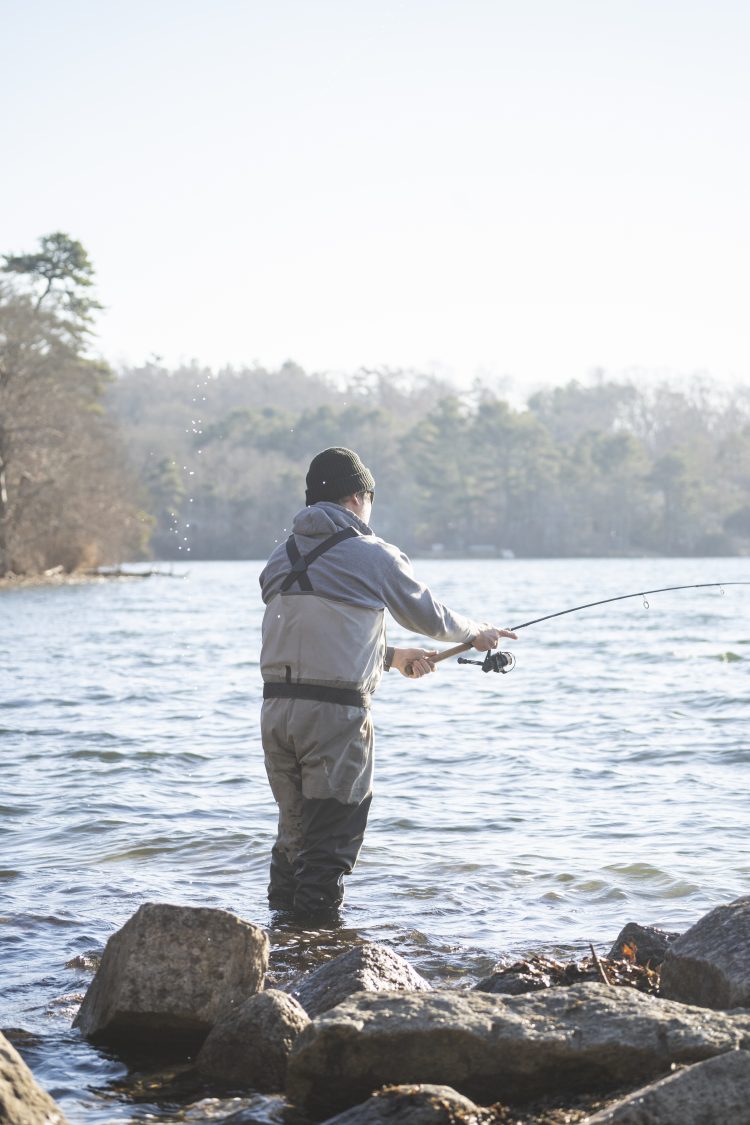
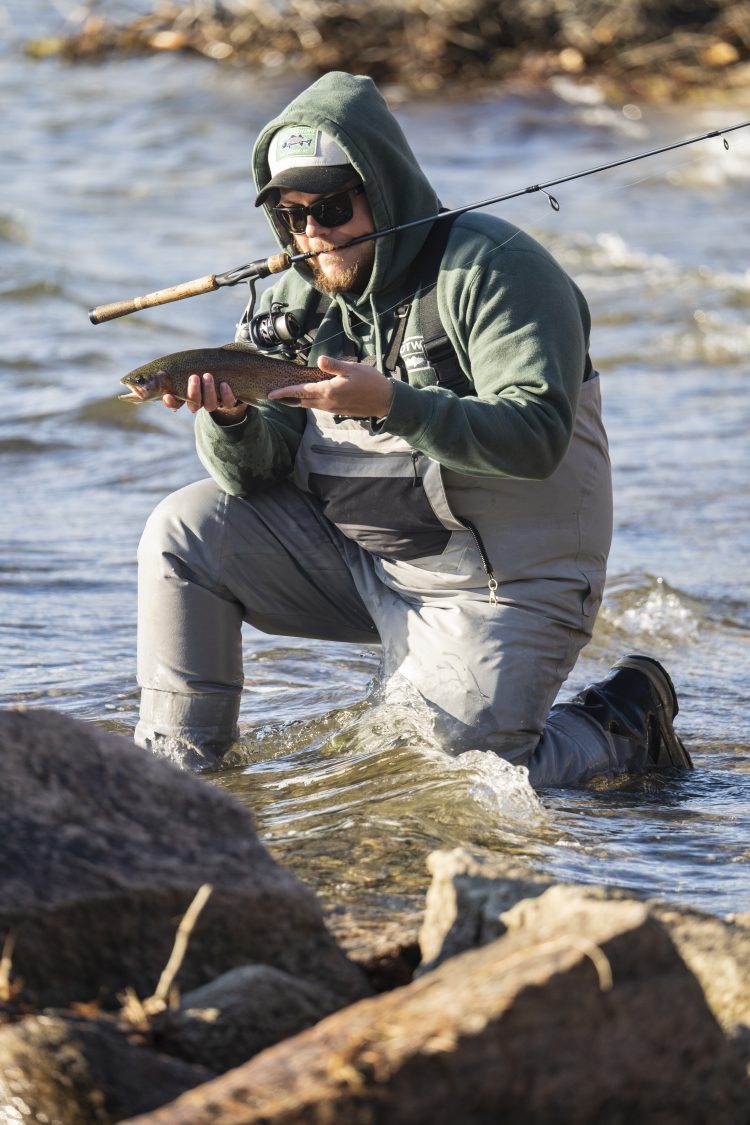
Supplemental Surfcasting
Generally, shore-fishing for trout often consists of quiet, relaxing days spent covering calm waters, and enjoying the outdoors as much as the fish. It’s a peaceful type of fishing that can be intensified with the right conditions and adequate gear.
On the next trip to the trout pond, avoid the comfort of the warm, sunny cove and fish the side with the wind in your face. This lake—though typically crystal clear, leaving trout alert and wary of lures—was churned up and choppy, allowing them to slash through schools of herring in inches of water. Under the right conditions, trout go from cautious insect-eaters to crashing on baitfish like our favorite saltwater species do in the surf.
I’ll gladly sacrifice my lunch this winter if it means fast action on fun-sized lures from our herring-loving trout.
Related Content
Five Essential Spinners for Trout
1 thought on ““Surfcasting” for Trout”
-
Joseph dans Very cool article! I was recently successfully did blitz fishing for stripers along the Jersey show where there used to be sea-run browns facilitated by NJ stocking thousands of browns in the Masquan river. Some got to be as big as 9lbs. The program was killed because fisherman would not report their successes and could not justify the Program. It’s good to see you did. I do a radio show in the New York area and I think it would be interesting to interview you about your successes and fishing on cape cod which is not usually associated with freshwater fishing…even more so in the winter. Please ping me via my email.
Leave a Reply